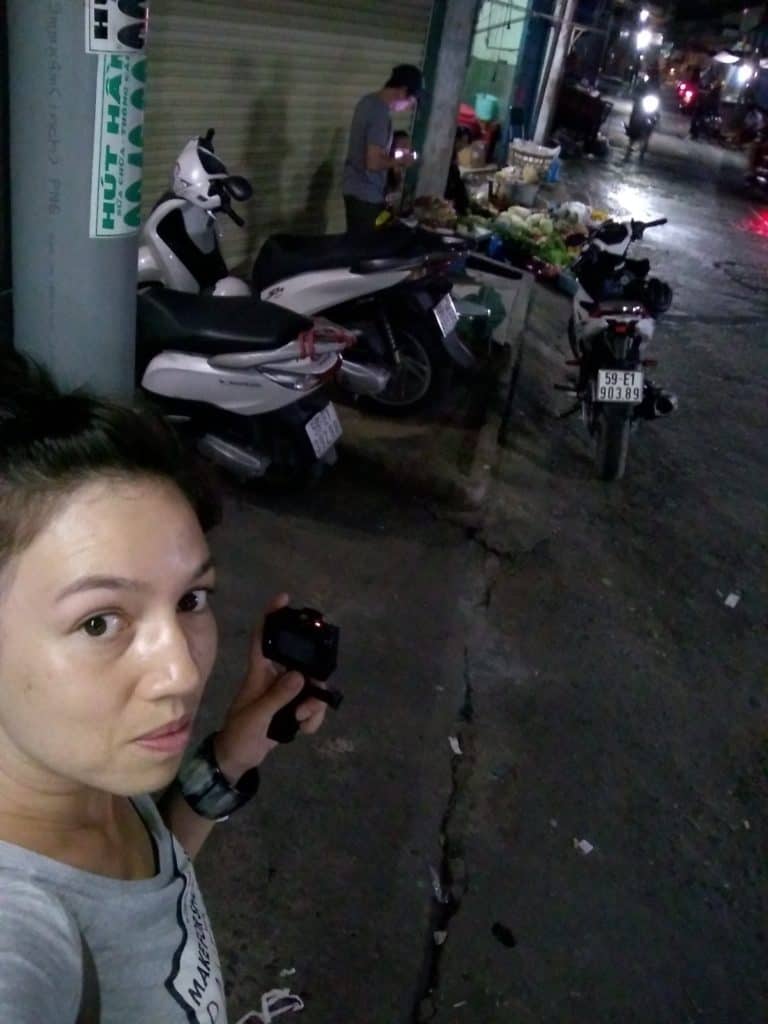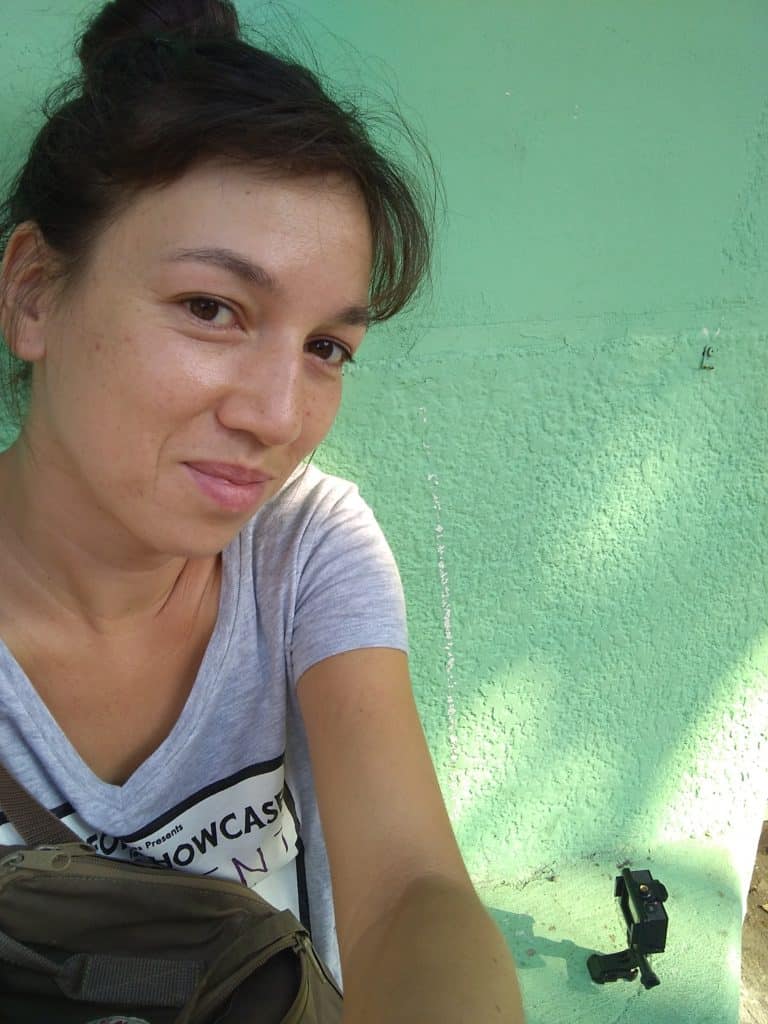By Eric Ruble
Ho Chi Minh City in Vietnam is on the precipice of a major mobility change. Motorbikes – a ubiquitous presence in the large city – will be outlawed in central neighborhoods by 2030.
USC Price School of Public Policy PhD graduate Huê-Tâm Jamme focused on this topic in her dissertation, which examined Ho Chi Minh City’s street life, traffic flows and how the new 2030 policy will transform residents’ lives.
In October 2021, Jamme received the Association of Collegiate Schools of Planning’s Barclay Gibbs Award, which recognizes “superior scholarship in a doctoral dissertation.”

(Photo: Huê-Tâm Jamme)
Robust analyses of mobility
Jamme, who is an assistant professor in the School of Geographical Science and Urban Planning at Arizona State University, described Ho Chi Minh City as “the world capital of motorbikes” when she conducted her research in 2018. While car ownership has been rapidly increasing since 2015, the vast majority of the city’s 9 million residents get around on motorbikes.
“The organization of the city is very much shaped by this one mode of transportation,” Jamme said.
Jamme says the government is “counting on mass transit to absorb the demand for motorbikes.” But while a metro system is under construction, it remains unclear whether it will be able to accommodate the planned transition.
Indeed, as Jamme notes in her dissertation, 85% of residents live in homes attached to narrow alleys. Without motorbikes, many would have to endure long walks in the heat or rain to public transit stops.
“Promoting and planning for walking, biking, and micro-mobilities such as shared e-bikes and scooters would in fact be the most inclusive, sustainable, and contextually appropriate transportation policies,” Jamme suggests in her research. “But these forms of mobility do not align with the widely accepted idea of modern mobility centered on car- and mass transit.”
To examine the consequences of a shift away from motorbikes, Jamme spoke with some of the city’s 1 million street vendors, who will be among the most directly affected by the change.
“They depend on the ability of people on motorbikes to stop and purchase something on the way,” Jamme said.

When Jamme interviewed residents about how the transition to cars and mass transit would impact their lives, many admitted they had not thought about how it would limit their ability to participate in the local economy. For example, they said they may begin shopping for food at supermarkets instead of street markets.
“They would just not be able to do the same things, go the same places and engage in the same activities. Everything would change,” Jamme shared.
A surprisingly popular policy change
Because Ho Chi Minh City’s streets and alleys are almost always clogged with motorbikes, it is difficult to imagine their disappearance. However, the ban is surprisingly popular, even among those who rely on motorbikes to commute.
Jamme said the support was one of the more surprising elements of her research. She said, “There’s a strong sense of acceptance and a belief that they have to do their share, which means adapting to a world without motorbikes – even if it’s painful– to support the country’s development.”
Jamme says like much of the world, people in Vietnam often associate cars with wealth and progress. Cars are also safer than motorbikes and better protect occupants from pollution and dust. Some people Jamme spoke with had plans to purchase a vehicle within the next year, while others said they may not ever be able to afford one.
“There is an aspiration for that change, and there is an underestimation for what will be lost,” she said.
As Jamme notes, the new regulations only pertain to the city’s core and would not be implemented “overnight.” Still, it will alter the entire landscape of how people move around the city and how they use public space.
“Mobility plays a major role in shaping the activity of places,” she said.
Lessons learned for other cities

As Ho Chi Minh City looks toward a future with more cars, it can still provide valuable lessons for places that are already car-dependent, including Los Angeles.
“Los Angeles wants certain things that HCMC has,” Jamme argues. “We do want more active street space, we do want more inclusive streets, we do want people to have a chance to interact with each other on a day-to-day basis, we do want to shift away from the car.”
Jamme believes that city planners and policymakers alike can learn that simply improving access for pedestrians and bicyclists will not make a city more livable. Moreover, Ho Chi Minh City provides a unique example of how a city can have lively spaces where the urban poor are largely integrated with the middle and upper classes. Jamme says this happens because motorbike flows enable street activity through what she describes as “productive frictions.” In her dissertation, Jamme defines the phenomenon as “opportunities for social interactions that are permitted by the contact between a flow of movement and the built environment it traverses,” and they occur rather organically in Ho Chi Minh City.
“There is something we can learn and import,” Jamme said. “The lesson learned from it is that so far, when we want to create those vibrant public spaces, we ignore the role that mobility plays in it.”
To be sure, as Jamme points out, Los Angeles will never be structured like Ho Chi Minh City. But she hopes that through her research, cities in developed countries can turn to places like Ho Chi Minh City for innovative ideas on how to boost livability and – perhaps ironically – decrease dependency on the car. “When you do empirical research, it is always difficult to talk about the future, but that is what this is all about.”
